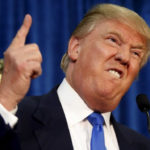Tensions in the volatile eastern Democratic Republic of Congo (DRC) have escalated dramatically, spilling over into a bitter diplomatic row between Rwanda and the Southern African Development Community (SADC), currently chaired by Zimbabwean President Emmerson Mnangagwa. The conflict has also ignited a fiery exchange between Rwandan President Paul Kagame and his South African counterpart, Cyril Ramaphosa, culminating in veiled threats of military action.
Kagame’s warning follows a recent SADC emergency meeting in Harare, where the regional bloc, led by Mnangagwa, condemned Rwanda’s alleged involvement in the conflict and accused its defence forces of killing SADC troops in the DRC. The meeting, held on January 31, 2025, saw SADC demand that its mission in the DRC, known as SAMIDRC, should not be involved in fighting what it described as Congolese citizens, referring to the M23 militant group.
Rwanda’s Angry Response
In a strongly worded statement released on Sunday, Rwanda’s Foreign Affairs ministry accused SADC of aggression and of assisting the DRC government in its conflict against its own people.
“SADC has deployed an offensive force, SAMIDRC, to support the war of the government of the Democratic Republic of Congo against its own people, the M23 and the members of their community, many of whom have fled as refugees to Rwanda and throughout the region,” the statement read.
The Rwandan government also accused the DRC of harbouring intentions to attack Rwanda, citing public statements by DRC President Félix Tshisekedi.
“The government of the Democratic Republic of Congo is also intent on attacking Rwanda and its government, as has been repeatedly and publicly said by President Tshisekedi,” the statement added.
Rwanda further claimed that SAMIDRC, alongside its coalition partners, including the Burundian armed forces, the FDLR (a rebel group with links to the 1994 Rwandan genocide), and European mercenaries, were exacerbating the conflict.
“They should not be there fighting the citizens of that country and effectively bringing war to Rwanda,” the statement concluded.
Despite its harsh criticism, Rwanda expressed openness to a proposed joint summit between the East African Community and SADC to seek a lasting solution to the DRC conflict.
SADC’s Condemnation of Rwanda
The Rwandan statement was a direct response to SADC’s emergency meeting in Harare, where the regional bloc condemned the M23 rebel group and accused Rwanda of supporting its operations. SADC also expressed concern over the recent attacks by the M23 and Rwanda Defence Forces on DRC government forces, SAMIDRC troops, and civilians in North Kivu.
“The summit condemned in the strongest terms the attacks on the SAMIDRC troops by the M23 operating in the Eastern DRC, as such actions violated the ceasefire that was brokered through the Luanda Process on the thirtieth of July two thousand and twenty-four and undermine peace and security of the Democratic Republic of Congo and the SADC region,” read part of SADC’s communique.
Kagame vs. Ramaphosa: A War of Words
The diplomatic fallout between Rwanda and South Africa intensified last week following the deaths of 14 South African soldiers in clashes with M23 rebels. Kagame took to X (formerly Twitter) to accuse Ramaphosa of lying and distortion, denying claims that the South African president had warned him of a military response if Rwandan forces attacked South African troops in the DRC.
“What has been communicated about my conversations with Ramaphosa in the media, by South African officials and by Ramaphosa himself, contains a lot of distortion, deliberate attacks, and even lies,” Kagame wrote.
Kagame claimed that Ramaphosa had instead asked for Rwanda’s assistance in ensuring that South African forces had adequate electricity, food, and water. He also dismissed South Africa’s characterisation of SAMIDRC as a “peacekeeping force,” insisting that it was a “belligerent force” engaged in offensive combat operations.
“SAMIDRC is not a peacekeeping force, and it has no place in this situation,” Kagame said. “It was authorised by SADC as a belligerent force engaging in offensive combat operations to help the DRC government fight against its own people, working alongside genocidal armed groups like FDLR which target Rwanda, while also threatening to take the war to Rwanda itself.”
Kagame further alleged that Ramaphosa had confirmed to him that the M23 rebels were not responsible for the deaths of South African soldiers, suggesting instead that the DRC’s armed forces (FARDC) were to blame. This claim has been met with scepticism, given the widespread belief that the M23, backed by Rwanda, is the primary aggressor in the conflict.
While Rwandan government spokesperson Yolande Makolo later clarified that Kagame’s statement was meant to set the record straight rather than threaten military action, the message underscored the deepening rift between the two nations.
The M23: A Persistent Threat
The M23, or March 23rd Movement, emerged as a rebel group in the DRC in 2012, primarily composed of ethnic Tutsi Congolese. Its roots can be traced back to the National Congress for the Defence of the People (CNDP), which was integrated into the Congolese army in 2009 as part of a peace agreement. However, many CNDP fighters felt that the agreement was not being upheld, particularly regarding issues of integration and their safety.
These grievances led to the mutiny on March 23, 2012, forming what became known as the M23. The group has been accused of committing human rights abuses and is widely believed to be funded and supported by Rwanda, a claim Kagame’s government denies.
A Region on the Brink
The escalating conflict in the DRC has drawn in multiple regional and international actors, with SADC deploying peacekeeping troops, primarily from South Africa, to combat armed groups like the M23. However, Rwanda’s involvement and Kagame’s defiant stance have complicated efforts to restore peace in the mineral-rich region.











